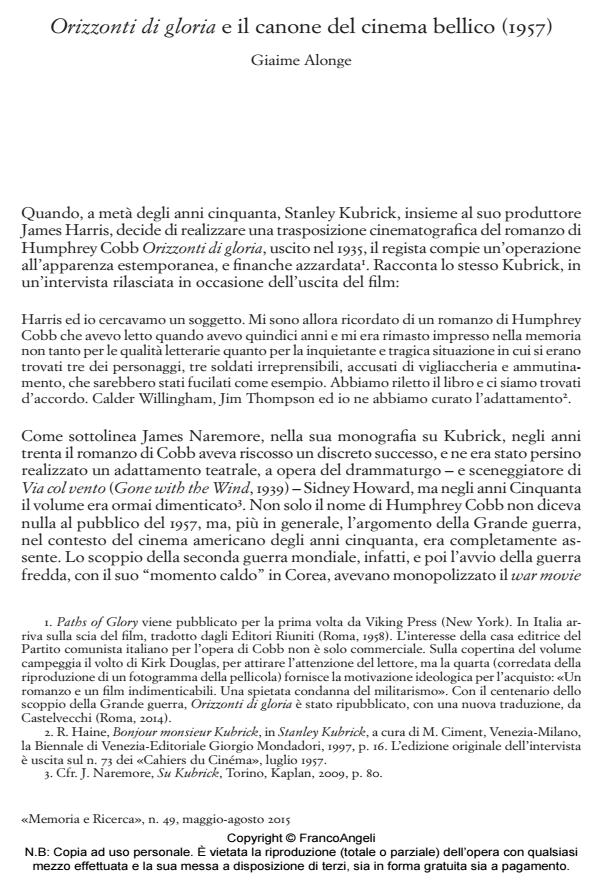Orizzonti di gloria e il canone del cinema bellico (1957)
Titolo Rivista MEMORIA E RICERCA
Autori/Curatori Giaime Alonge
Anno di pubblicazione 2015 Fascicolo 2015/49
Lingua Italiano Numero pagine 16 P. 55-70 Dimensione file 195 KB
DOI 10.3280/MER2015-049005
Il DOI è il codice a barre della proprietà intellettuale: per saperne di più
clicca qui
Qui sotto puoi vedere in anteprima la prima pagina di questo articolo.
Se questo articolo ti interessa, lo puoi acquistare (e scaricare in formato pdf) seguendo le facili indicazioni per acquistare il download credit. Acquista Download Credits per scaricare questo Articolo in formato PDF

FrancoAngeli è membro della Publishers International Linking Association, Inc (PILA)associazione indipendente e non profit per facilitare (attraverso i servizi tecnologici implementati da CrossRef.org) l’accesso degli studiosi ai contenuti digitali nelle pubblicazioni professionali e scientifiche
Stanley Kubrick’s Paths of Glory (1957) is the first relevant American film on World War I after Howard Hawks’ Sergeant York (1941). Inevitably, World War Two, and the subsequent Cold War (with its "hot moment" in Korea), totally re-orienteered the war movie genre, that in the thirties had flourished mainly on the memory - mediated by the "war books boom" of the late twenties - of the Great War. When he chooses to go back to the 1914-18 conflict, Kubrick deliberately goes back to the pre-World War Two canon, epitomized by Lewis Milestone’s All Quiet on the Western Front (1930). But at the same time, Paths of Glory represents the beginning of a new canon. Telling the story of a grotesque court-martial trial in a first line French infantry division, Kubrick depicts the Great War as the quintessence of every possible mass mechanized conflict, posing the founding stones of a canon which is still productive today.
Parole chiave:Adaptation; Stanley Kubrick; militarism; pacifism; war movie; war novel.
Giaime Alonge, Orizzonti di gloria e il canone del cinema bellico (1957) in "MEMORIA E RICERCA " 49/2015, pp 55-70, DOI: 10.3280/MER2015-049005